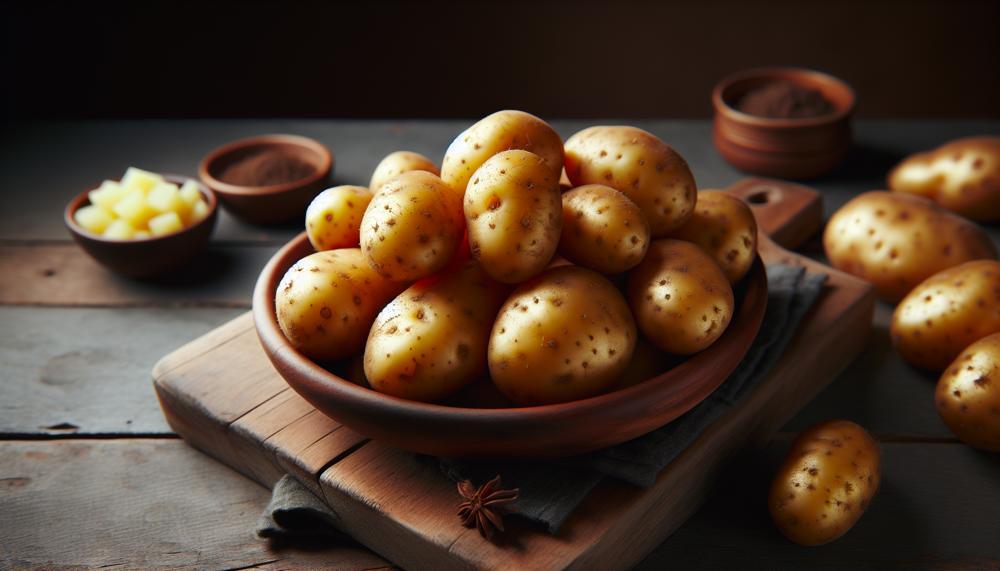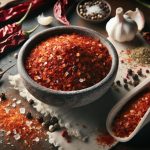Do you ever find yourself wondering if slightly soft potatoes are okay to cook? Don’t worry, you’re not alone. Achieving the perfect texture for potatoes can be a daunting task, but fear not – we have some insider tips and tricks that will help you master the art of cooking these versatile tubers.
In this blog post, we’ll cover everything from the best cooking methods to seasoning suggestions for achieving perfectly cooked, slightly soft potatoes every time.
So grab your apron and let’s get cooking.
- Why is it so important to cook potatoes just right? Well, as any potato lover knows, the texture of these starchy delights can make or break a dish. Too hard and they’re difficult to eat, too soft and they turn into mush. But when cooked perfectly, they are creamy, fluffy, and oh-so-delicious.
- So how do you achieve that ideal slightly soft texture? It all starts with choosing the right cooking method. From boiling to roasting to microwaving, each method has its own benefits and pitfalls when it comes to achieving the desired texture. We’ll break down each one and give you our expert tips for success.
- But what about flavoring your potatoes? While some may argue that potatoes are bland on their own, we believe they are a blank canvas just waiting for some delicious seasonings and flavors. From herbs and spices to butter and cheese, there are endless options for elevating your potato dishes.
- Of course, no cooking journey is complete without learning from mistakes. We’ll share some common errors people make when cooking potatoes and how to avoid them in order to achieve perfect results every time.
- And as a bonus treat, we’ll even share a recipe for creamy mashed potatoes that will have your taste buds singing with joy.
- So whether you’re making a hearty shepherd’s pie or simply craving some roasted potatoes as a side dish, these tips will ensure that your spuds come out perfectly cooked and full of flavor.
Let’s elevate our potato game together.
Contents
- 1 Are Slightly Soft Potatoes Okay To Cook?
- 2 How To Determine If A Potato Is Still Safe To Eat
- 3 Best Way To Store Potatoes
- 4 Scientific Reasons Why Wrinkled Potatoes Are Unsafe To Eat
- 5 What are Glycoalkaloids? And Why Are They Dangerous?
- 6 Is it possible to remove toxins from sprouted potatoes?
- 7 Is it possible to remove toxins from sprouted potatoes?
- 8 Conclusion
Are Slightly Soft Potatoes Okay To Cook?
Yes, slightly soft potatoes are usually okay to cook. Potatoes are 80% water, so softness is usually a sign of dehydration. Potatoes with small sprouts, like little green, white, or pink nubs, are safe to eat.
If you can knock off the sprouts with your finger or a brush, that’s fine.
How To Determine If A Potato Is Still Safe To Eat
When it comes to determining the safety of a potato, especially if it feels slightly soft, here are some steps you can take:
- Inspect the raw potato for any signs of softness or wrinkled skin. These could be indications that the potato is no longer safe to eat. If this is the case, it’s best to discard the potato.
- Take a whiff of the potato for any unpleasant odors. A strong, foul smell could also indicate that the potato is spoiled and should not be consumed.
- Look closely for any visible signs of mold or bacterial growth on the raw potato. If you notice any, it’s best to throw out the potato.
- Remove any sprouts that may have formed on the potato. While sprouts are not harmful to eat, they can affect the taste and texture of the potato. Once removed, the rest of the potato is safe to consume.
- Check for any green spots on the potato. These spots are a result of exposure to light and may contain a potentially toxic compound called solanine. If the green coloring is mild, it’s safe to cut it off and consume the rest of the potato.
- Keep in mind that potatoes with eyes or small impurities can still be eaten after removing them before cooking.
- Cooked potatoes that have been left at room temperature for more than two hours should be disposed of to prevent food poisoning.
- Store raw potatoes properly in a cool, dry place with good air circulation. Avoid storing them in the refrigerator as it can make them sweeter and cause them to lose flavor.
- For longer storage, store potatoes with an apple to prevent sprouting.
- Keep onions and potatoes stored separately as onions release a gas that can speed up spoilage in potatoes.
Best Way To Store Potatoes
The optimal method for storing potatoes is to keep them in a cool, dim, and dry location with adequate ventilation. This will aid in preserving their freshness and guarantee they are safe to consume. Before eating potatoes, it is essential to check for signs of decay and avoid storing them in refrigeration. Here are some crucial pointers for storing potatoes to maintain their safety and freshness for cooking:
- Select the appropriate storage spot: Potatoes should be kept in a cool, dim, and dry location with a temperature range of 45-50 degrees Fahrenheit. This could include a pantry, cellar, garage, or root cellar.
- Utilize a well-ventilated container: Potatoes require air circulation to prevent moisture buildup and mold growth. Use a paper bag, cardboard box, basket, or mesh bag to store your potatoes. Before use, make sure the container is clean and dry.
- Refrain from storing potatoes in the refrigerator: While refrigeration can prolong the shelf life of many foods, it is not recommended for storing potatoes. The cold temperature can convert the starch in potatoes into sugar, resulting in a sweeter taste and unpleasant texture.
- Check for signs of spoilage: Always check for signs of decay before consuming potatoes, such as softness, mold, sprouts, green spots, and unpleasant odors. If you observe any of these indicators, discard the potato immediately.
- Keep onions separate: Onions release ethylene gas which can accelerate the spoilage of potatoes. To prevent this, store onions and potatoes separately.
- Consider alternative storage methods: If you want to store potatoes for longer periods, you can blanch and freeze them or dehydrate them. These methods will help preserve the potatoes for up to 12 months.
Scientific Reasons Why Wrinkled Potatoes Are Unsafe To Eat
- Damaged Starch Molecules: The appearance of wrinkles on potatoes is often a result of uneven heating during processing, which can damage the starch molecules within the potato. This leads to a smaller surface area for moisture to penetrate, making it more difficult to cook the potato thoroughly and eliminate harmful bacteria.
- Glycoalkaloids: Raw potatoes contain natural compounds known as glycoalkaloids, which give them a bitter taste. Consuming high levels of these compounds can result in symptoms such as nausea, vomiting, and even death. Wrinkled potatoes are more likely to have elevated levels of glycoalkaloids due to uneven heating or extended storage.
- Greenish Color: If a potato has a greenish hue, it is a sign of high levels of glycoalkaloids. These toxic compounds can have severe health consequences and should be avoided by not consuming green potatoes.
- Bacteria and Toxins: It is crucial to never eat raw potatoes as they can harbor dangerous bacteria, including E. coli, Salmonella, and Listeria. Thorough cooking is necessary to eliminate these bacteria and prevent food poisoning. Stale or old potatoes can also produce toxins that can lead to food poisoning if not stored or cooked properly.
- Allergens: Individuals with specific health conditions or allergies should refrain from eating raw potatoes as they may be more sensitive to the glycoalkaloids present in them. This could result in adverse reactions when consuming these potatoes.
Therefore, it is essential to avoid eating wrinkled potatoes due to the increased risk of toxins, bacteria, and allergens present in them. Proper storage and cooking methods are crucial in ensuring that potatoes are safe for consumption.
What are Glycoalkaloids? And Why Are They Dangerous?
Glycoalkaloids, also known as natural plant toxins, are commonly found in multiple plants, particularly in the Solanaceae family like potatoes, tomatoes, and eggplants. These substances serve as a protective mechanism against pests and diseases, making them non-essential for the plant’s survival.
When cooking potatoes that are slightly soft, there is a higher risk of glycoalkaloid presence due to damaged starch molecules. This is because softening potatoes cause their cells to break down, releasing more starch and sugars. The increase in sugars can lead to higher levels of glycoalkaloids. Moreover, cooking potatoes at high temperatures can also intensify the concentration of glycoalkaloids.
The consumption of glycoalkaloids can be hazardous because they can interfere with cell membranes and cause organ damage at high concentrations. Factors such as age, existing health conditions, and genetic makeup can also affect individual sensitivity to glycoalkaloids.
Furthermore, light exposure, temperature changes, water stress, and soil conditions can all impact the glycoalkaloid levels in plants.
Nevertheless, consuming excessive amounts of glycoalkaloids can lead to acute toxicity and may have long-term health effects if consumed in small quantities over time.
Is it possible to remove toxins from sprouted potatoes?
The answer is yes, but it’s important to follow proper preparation methods in order to make them safe to eat. This includes peeling the potatoes, boiling them, and soaking them in a vinegar solution. However, it’s always recommended to avoid consuming sprouted potatoes altogether, as they can still pose a risk of solanine poisoning and other negative effects.
We often want to find a way to make something that may seem harmful or unhealthy into something that we can still enjoy. It’s no different with sprouted potatoes. While they may have toxins that can cause harm, we can take steps to eliminate or reduce those toxins through proper preparation.
- Firstly, peeling the potatoes is an essential step. By removing the outer layer, we are getting rid of a majority of the toxins that are present.
- Next, boiling the potatoes can further reduce the toxins, making them safer to consume.
- Lastly, soaking them in a vinegar solution can also help to neutralize the remaining toxins.
But even with these steps, it’s still recommended to avoid eating sprouted potatoes whenever possible. This is because solanine poisoning can still occur even with these preparation methods. It’s better to err on the side of caution and choose alternative options for your meals.
Is it possible to remove toxins from sprouted potatoes?
Green spots and sprouts contain more toxins than the potato itself. These toxins can’t be destroyed by cooking, but can be eliminated by removing the green or sprouted portions before cooking.
To effectively remove toxins from sprouted potatoes, it is imperative to cut off any sprouts and green spots or discoloration on the potato.
Additionally, soaking the potatoes in cold water for several hours can aid in eliminating some of the toxins. Peeling the potatoes can also significantly decrease toxin levels, but it should be noted that peeling alone may not completely eradicate all toxins.
Boiling the potatoes for at least 15 minutes can further breakdown any remaining toxins and lessen their harmful effects.
It is crucial to avoid cooking techniques such as frying or roasting, as they may not effectively eliminate toxins from sprouted potatoes. By carefully following these steps, one can ensure that sprouted potatoes are safe to cook and consume.

Also Read: What Happens If You Leave Eggs In The Car?
Conclusion
In conclusion, cooking slightly soft potatoes may seem like a daunting task, but fear not.
With the right tips and tricks, you can achieve perfect results every time. Whether it’s choosing the best cooking method or adding delicious seasonings, there are countless ways to elevate your potato dishes.
However, beyond just taste and texture, it’s important to also consider the safety of potatoes before consuming them. By properly storing and preparing them, you can avoid potential risks such as toxins and bacteria.
Armed with these insider secrets, you’ll be well on your way to mastering the art of cooking perfectly textured and flavorful potatoes.




